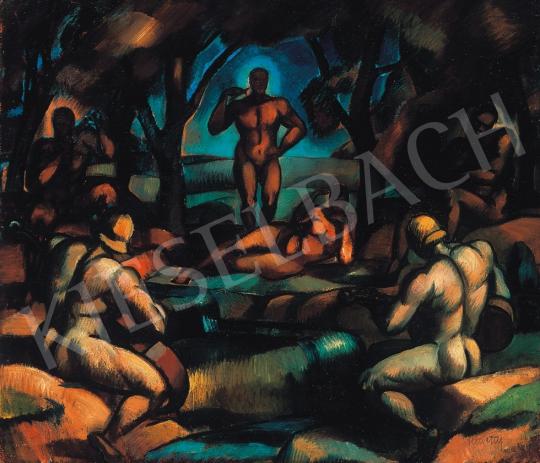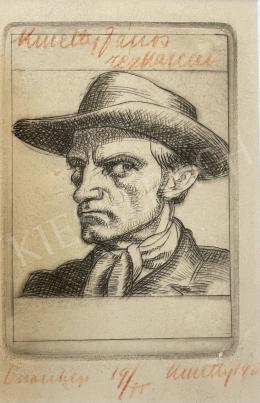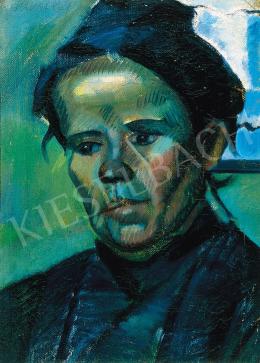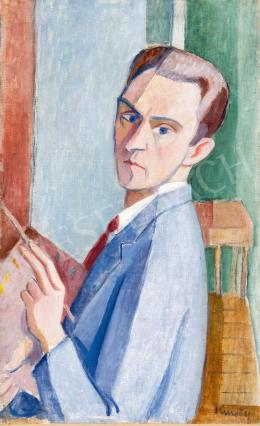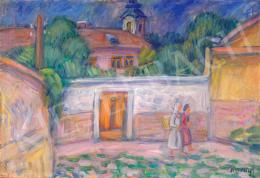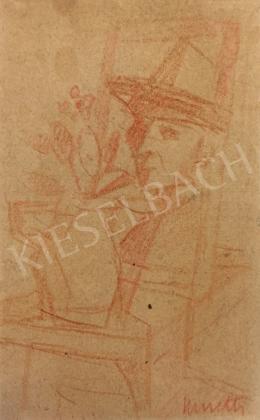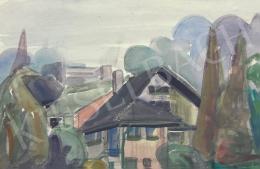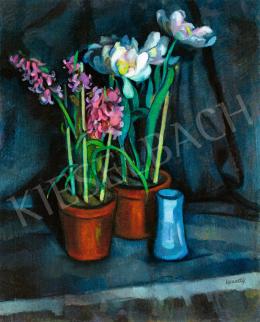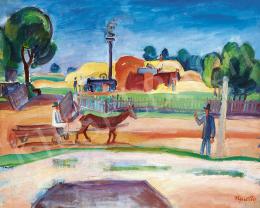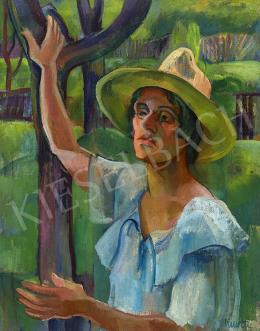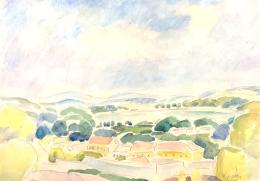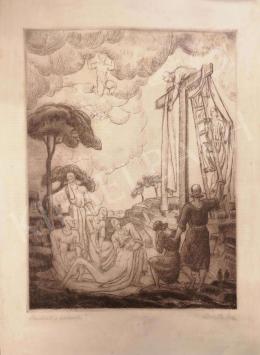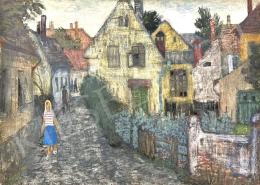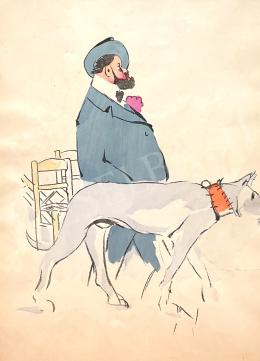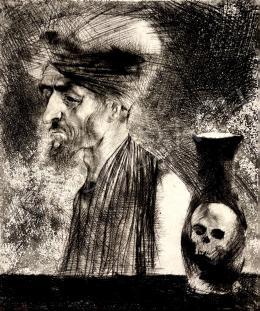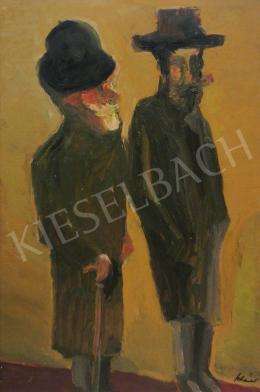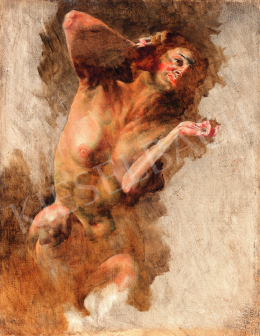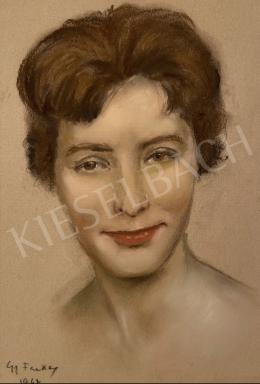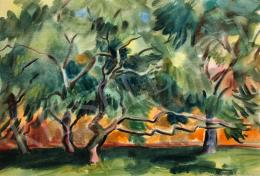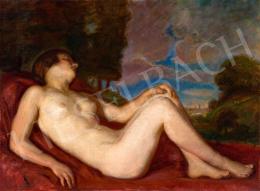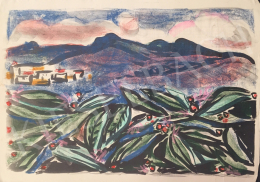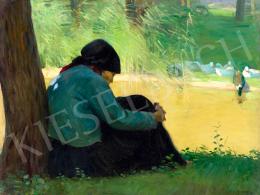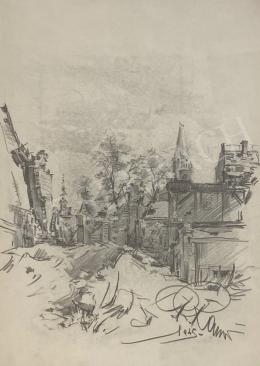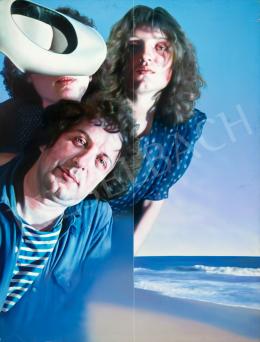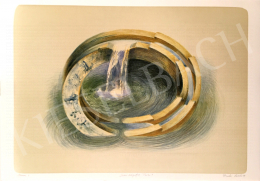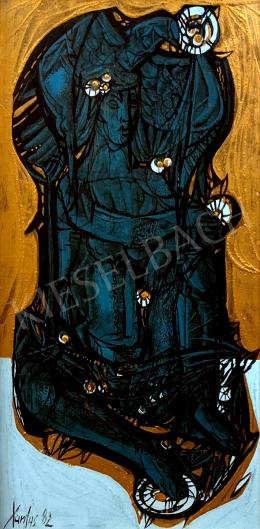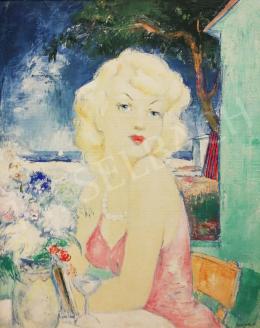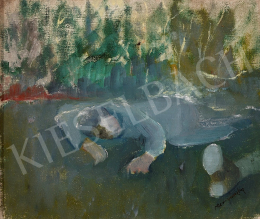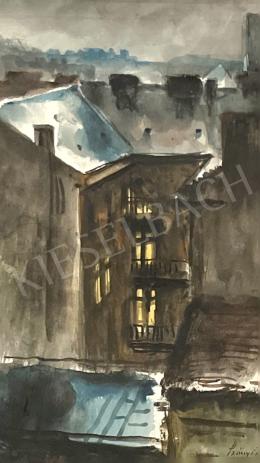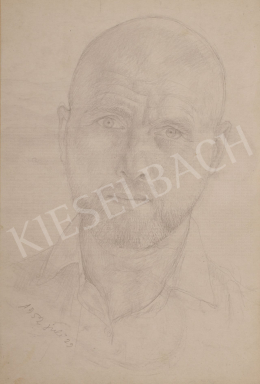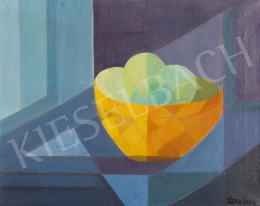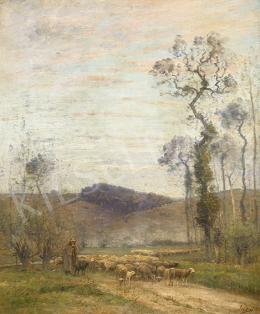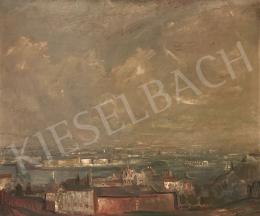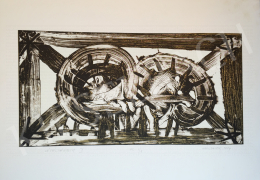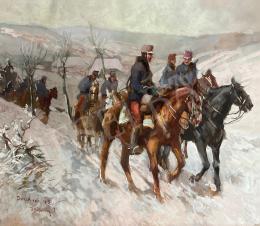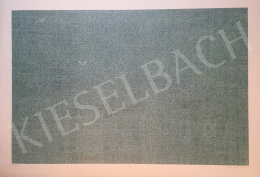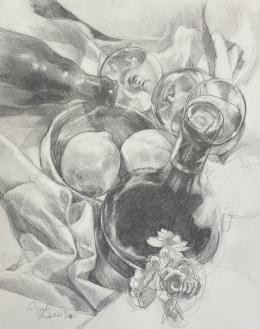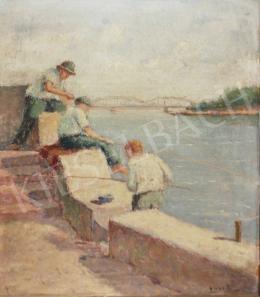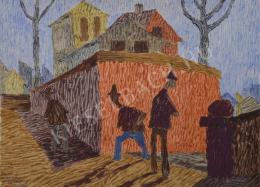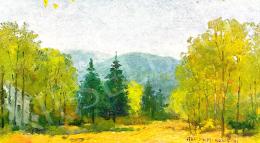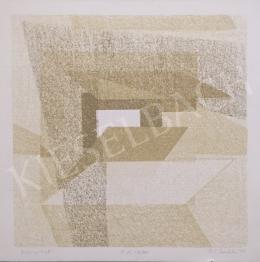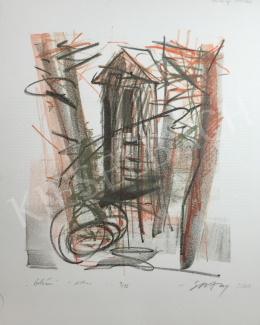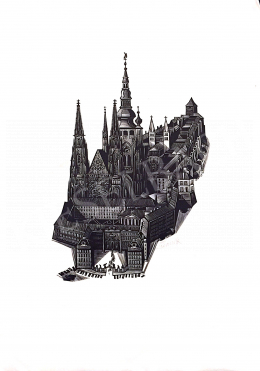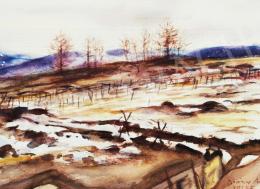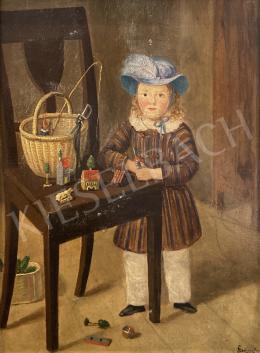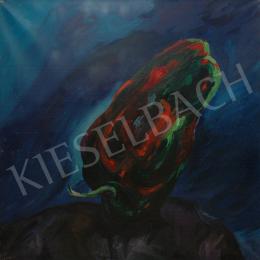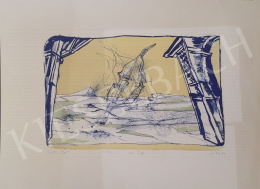The progressive trend of Hungarian painting from the 1910s is authentically represented by Kmetty's Golden Age. This picture not only epitomize the early years of Kmetty's art but also gives an authentic picture of the era of the time when the painting was made. It represents the then contemporary aims, makes the inspiring elements of tradition visible. At its time it marked out a long way which would be followed by Hungarian artists for decades.
In 1911 Kmetty spent more than six months in Paris. He studied not only the contemporary art but also the collections from museums, first and foremost the pictures of the Louvre. His inquiring mind did not settle for receiving the modernity of Paris; he wanted to synthesize the old and the new, to create the 'great work' which would be abiding and eternal. He discovered Cezanne, whose pictures offered him the possibility of an art which datelessness was opposed to the momentariness of Impressionism. Visiting the Pellerin-collection which presented Cezanne's pictures remained one of the most important events of his life.
Before he went to Paris, Kmetty had visited Károly Kernstock's lectures in Hungary. According to Kernstock theory, the artist should not paint the world surrounding him but should create another independent world, an independent composition. He exacted intelligence in painting and 'orderly human brain-work'.
This intelligence, orderliness and logical advisedness can be observed in every detail of Kmetty's picture. The composition is perfectly worked out, the system of symbols is closed and organic. The picture expresses the desire of the era for the lost paradise. This particular trend of classicism was born in the late 19th century, when the disharmony of the world excited such a strong desire for harmony and the ideal. One of its first representatives was the German painter Hans von Marees, but the trend was also represented by de Chavannes' or Gauguin's works.
It is an exciting challenge for the viewer to unweave the complex levels of meaning from Kmetty's picture. The stressed nudes relate to us the very interesting characteristics of painting around the 1910s. The artists' turning to the figure of the nude can be understood as a rebellion against his predecessors, for the naked human body put into a landscape was in striking contrast to the doctrine of Impressionism which said that the artist's aim should have been the representation of everyday reality. Painters began to work with notions and embodiments again, and the representation of the nude served as a perfect means. It is not by mere chance that the two pictures which are usually mentioned as the starting points of a new art following Impressionism, Matisse's Blue Nude and Picasso's The Ladies from Avignon are also nude compositions.
The composition of the nudes making music evokes some compositions of Renaissance art, for example Giorgone's picture in the Louvre, Concert in the Open, must have been admired by Kmetty as well. It makes the viewer remember the naked bacchants of the Roman sarcophagi, or the literary bequest of great poets like Ovid and Vergil, and the myth of a golden age. The harmony of man and nature, the totality expressed by music is represented in the picture; the brook may symbolize the root of life or time that is always going ahead but never ending. Kmetty's naked bodies are symbols as well; but while in some of the contemporaries' (for example Kernstok's or Poór's) pictures they represent energy and an ideal of a new man moving the whole world around himself, his figures seem to stand for musical harmony, just as the figures in Matisse's pictures Dance and Music. The composition of colors is also symbolic. Blue has stood for innocence, incorruption and the ideal for ages. In modern art it gained a symbolic meaning again: Cezanne's pictures or Picassos's blue era can be mentioned.
Kmetty was attracted by mythical and biblical themes; he often filled his Arcadian landscapes with transcendental, mystical allusions. However, the figures of the Golden Age evoke rather the world of ancient Greek culture. Several elements of representation make it likely that the central figure is Apollo; he was the patron of muses, music and poetry, the embodiment of reason, order and moderation. Apollo's figure has become the bearer of many different meanings, so it no wonder that the viewer connects him to the figure of Christ, or the new, 'acting' man of the 20th century.
The compactness of the picture is created by the perfect symmetry and the abstracted world of colors. Kmetty's conscious pictorial citations - like, for example, the laying nude alluding to Tiziano's Venus or the figures playing instruments, which can be familiar from Renaissance painting- stresses the idyllic atmosphere of the picture.
The Golden Age is a very important piece not only from Kmetty's oeuvre but also from Hungarian modern painting. It inspired some of the outstanding artists of later Hungarian painting like István Szőnyi and Gyula Derkovics.






